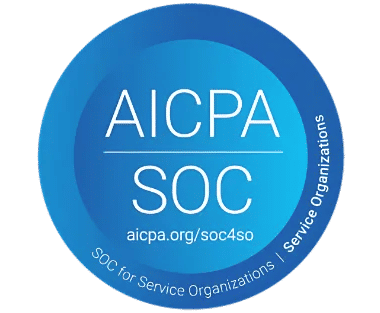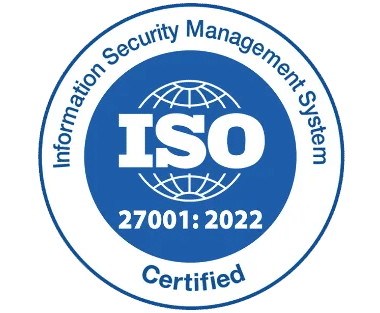Home > Case Studies > Recruitment Management Software
Real Wins from Smart Volunteer Recruitment Strategies

Spotlight
Effective Volunteer Recruitment Strategies is vital for nonprofits, community organizations, and businesses aiming to create lasting change. With a solid strategy in place, organizations can attract passionate individuals equipped with skills that foster real progress. This case study illustrates how a nonprofit revamped its volunteer recruitment process using strategic, data-driven approaches. The result? Boosted engagement, a broader talent pool, and deeper community connections.
Highlights
Increase in Volunteer Sign-ups
Increase in Retention
Growth in Volunteer Diversity
The Challenge: Struggling with Volunteer Engagement
A nonprofit focused on community outreach faced several challenges when it came to recruiting volunteers. Despite a passionate mission and clear goals, the organization struggled with high turnover rates and a limited volunteer pool. Key problems included:
- Ineffective outreach methods: Traditional recruitment methods such as word-of-mouth or generic social media posts were not attracting ideal candidates.
- Low engagement: Volunteers struggled to connect with the mission, leading to lower retention, higher dropout rates.
- Limited diversity: Diversity in backgrounds, skills, perspectives was lacking, stifling creativity and growth.
- Slow response times: Delays in communication caused missed opportunities for volunteers, organizations alike.
Challenges slowed organizational growth, leaving the team stretched thin during key moments.
Strategy Implementation: Smart Volunteer Recruitment Strategies:
To overcome challenges, the organization revamped its volunteer recruitment strategy. Embracing a data-driven approach helped engage a broader, more diverse group while streamlining processes. Here is how:
1. Digital Outreach and Targeted Campaigns: Instead of sticking to traditional methods, the organization embraced digital channels such as social media, email campaigns, and volunteer matching websites.
- Social Media Ads: Targeted Facebook and Instagram ads focused on specific age groups, locations, professions.
- Email Newsletters: Personalized updates, along with success stories, re-engaged past volunteers while drawing in new recruits.
This strategy boosted visibility, linking with individuals eager to contribute to a meaningful cause.
2. Clear, Compelling Volunteer Roles: A key strategy involved clearly defining volunteer roles. Instead of vague opportunities, specific job descriptions were crafted with clear expectations, benefits, outcomes.
- Role Clarity: Rather than using a generic “Help us out,” specific roles like “Fundraising Lead” or “Community Outreach Specialist” were offered with detailed descriptions.
- Skills & Benefits: Listings highlighted required skills as well as those volunteers could develop, creating a strong sense of purpose.
This approach attracted volunteers passionate about the cause, confident in contributing meaningfully.
3. Automated Volunteer Onboarding: After volunteers showed interest, onboarding was slow plus complicated. To make it easier, automation tools were used for a faster, smoother experience.
- Online Applications: They created a simple online application form that quickly captured all necessary details.
- Automated Emails: Automated welcome emails helped volunteers get up to speed without waiting for a personal response.
This allowed volunteers to start sooner, reducing time spent on manual tasks for recruitment staff.
4. Building a Strong Community through Engagement: Retaining volunteers proved challenging. To address this, the nonprofit built a strong volunteer community by:
- Regular Check-ins: Scheduled check-ins via email or phone calls ensured volunteers felt valued, heard.
- Volunteer Appreciation Events: Organized events celebrated volunteers’ contributions, reinforcing a strong connection to the mission.
These efforts increased volunteer satisfaction, improving retention while creating a more committed base.
5. Diversity-Driven Recruitment: To expand talent pool, nonprofit adopted diversity-focused recruitment strategies, targeting various age groups, ethnic backgrounds, skill sets.
- Collaborating with Diverse Groups: Partnerships were formed with local organizations serving diverse communities, like schools, senior centers, immigrant services.
- Inclusive Messaging: Volunteer recruitment messages highlighted inclusivity, stressing that diverse perspectives are highly valued.
This approach increased volunteer numbers, bringing fresh ideas plus diverse perspectives to enhance organizational growth.
Results: Transforming Volunteer Recruitment Strategies
New volunteer recruitment strategies produced impressive results. Key metrics from the first six months include:
- 50% Increase in Volunteer Sign-ups: By emphasizing digital outreach with clear role descriptions, the nonprofit doubled volunteer sign-ups.
- 35% Increase in Retention: Volunteers with smooth onboarding and consistent engagement were more likely to remain dedicated to the cause.
- 40% Growth in Volunteer Diversity: Through partnerships with diverse organizations, alongside inclusive messaging, a nonprofit attracted volunteers from various backgrounds.
- Faster Response Times: Automated systems sped up responses to volunteer applications, enhancing experiences for both volunteers and staff.
Improvements led to stronger community support, more successful events, a larger impact. The nonprofit scaled programs, engaging with more people than ever before.
Industry
Consulting and IT Services
Location
USA, Texas




_JiluXJRGNl.svg)




_svxLrd-8yH.png)

_2VYSFUTN5m.png)
_2djTKNocf.png)





_Rapo0hRMBy.png)


























